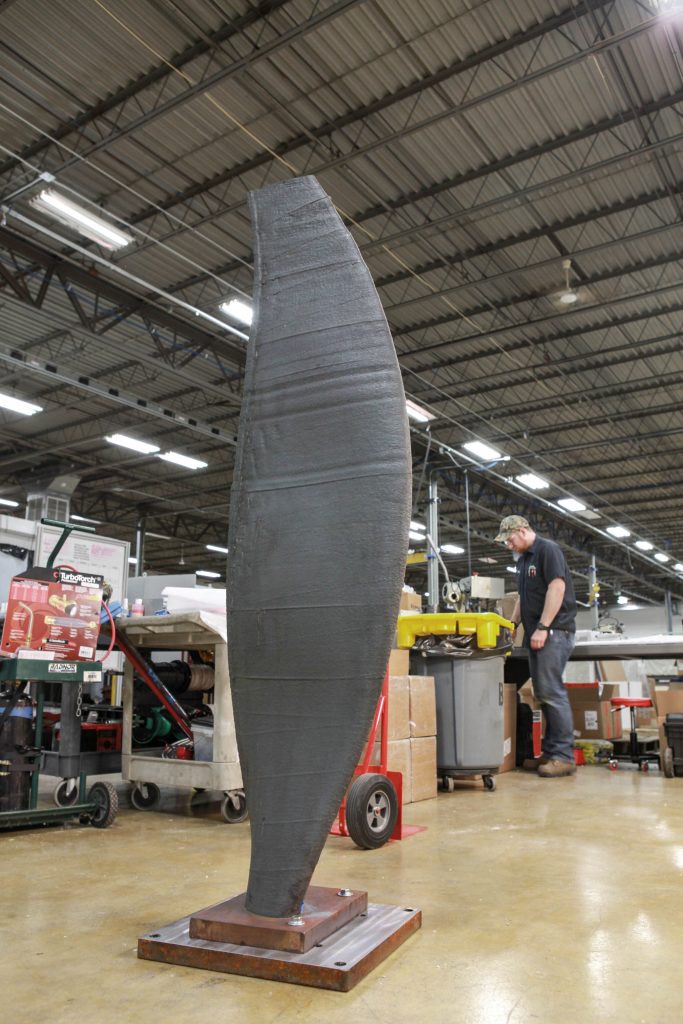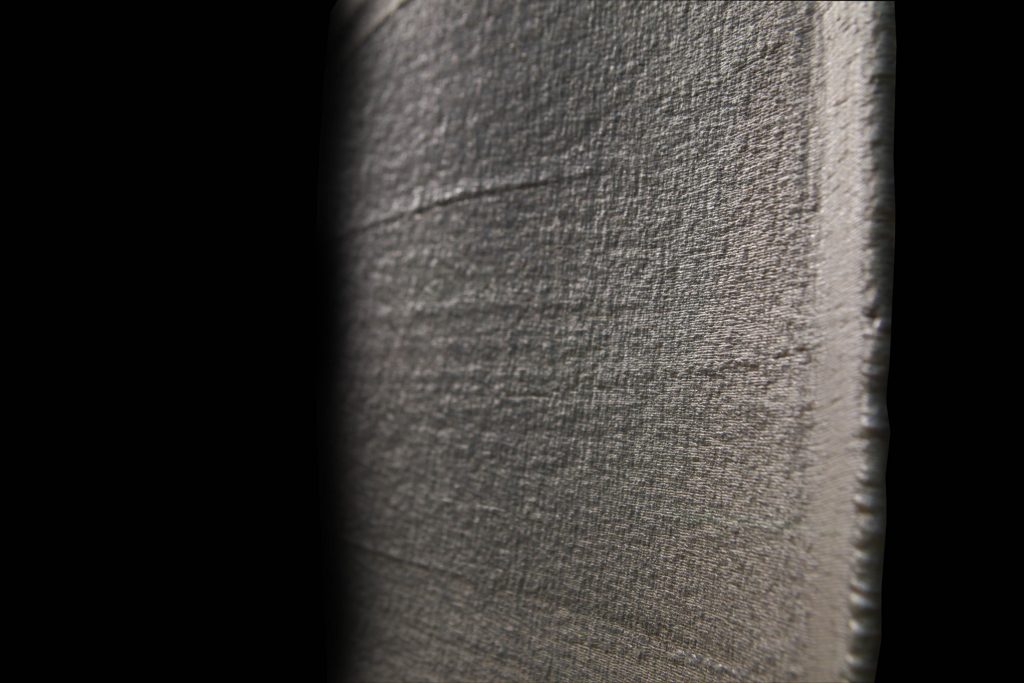Wisconsin technology developer ADDere has demonstrated its large scale additive manufacturing capabilities with the production of a 5ft 11in stainless steel turbine blade. Produced in the course of one single 30 hour run, the blade’s height maintains a tolerance within 0.5mm of its designed height, an outstanding achievement for the technology.
“While the complex shape was made in record time, the part is pretty spectacular in my opinion,” commented Scott Woida, ADDere President.
“The real story is being able to build such a large part on our system and stay so close to tolerances throughout the build is the most exciting aspect for us.”
Maintaining >0.5mm tolerance
ADDere is the additive manufacturing division of Wisconsin-based manufacturing company Midwest Engineered Systems Inc. (MWES). Its directed energy deposition (DED) system was developed by MWES in 2017 and, as of February 2019, it has been offered by the company as a metal 3D printing service. High strength alloys, including carbon steel, titanium, duplex stainless steel and superalloy Inconel are all processable by the technology though this service.
As a system portfolio, ADDere currently has three machines (ADDere I, II & III) increasing in build part size from 40 x 40 x 20in (L x W x H) to 1575 x 310 x 75in and 1575 x 310 x 75in.
In addition to its 5ft 11in in height (61.32 in total) the demonstration blade produced by ADDere measures 20 in wide. Hollow inside with 0.5mm wide side walls, the structure weighs 135lbs.

Achieving the tight tolerances of the blade was made possible by closed loop in-situ monitoring of the process. ADDere WALS control sofware also handled heating, cooling and meltflow parameters to prevent internal stresses.
“It’s a very complex process,” explains Pete Gratschmayr, VP of Sales & Marketing at ADDere. “Being able to hold dimension across 30 hours of metal heating and cooling, expansion and contraction, is a testament to how much knowledge has gone into the development of the software and control systems of the ADDere systems.”
Large scale additive manufacturing
Large scale additive manufacturing in metals is of interest to a variety of industrial sectors as it can help to reduce service and product lead times, and improve the performance of different systems.
Wire + arc additive manufacturing (WAAM) is another example of a technology being applied to make some of the industry’s biggest parts. This year, Cranfield University and commercial spinout WAAM3D won Aerospace/Automotive Application of the Year using WAAM to produce a 2.5m x 1.5 m rearframe for the BAE Systems Eurofighter Typhoon. WAAM is also the preferred metal 3D printing technology of the maritime industry, and applied to the production of the famed WAAMpeller, and Huisman’s 36,000 kg crane hook.
Electron beam additive manufacturing (EBAM) from Chicago firm Sciaky is another competitor for large scale applications. Airbus has been investigating the potential of Sciaky’s EBAM technology for several years, and the company recently confirmed that it would be part of a €4.2 million aerospace project led by IRT Saint-Exupéry in France.
Concluding comments on ADDere’s project using DED Gratschmayr adds, “We’re excited to take on large challenges to prove the system further.”

For more additive manufacturing aerospace news subscribe to our 3D printing newsletter. You can also follow us on Facebook and Twitter.
Visit Jobs for new opportunities in engineering.
Featured image shows detail of the ADDere 3D printed turbine blade. Photo via MWES

Leave A Comment